本文由 DAGA大观建筑 授权mooool发表,欢迎转发,禁止以mooool编辑版本转载。
Thanks DAGA Architects for authorizing the publication of the project on mooool, Text description provided by DAGA Architects.
大观建筑:万溶江畔的乾州古城历史悠久,被誉为湘西古四镇之首,而如今的乾州古城不仅是湘西州的文化窗口,更是整个湘西非物质文化遗产的汇聚地,24项国家级非物质文化遗产汇集于此。乾州古城天工居原为当地木工的传承实践的场所,供奉天工鲁班,改造前已是废弃的房屋。
DAGA Architects: The ancient city of Qianzhou on the bank of the Wanrong River has a long history and is known as the first of the four ancient towns in Xiangxi. Today, the ancient city of Qianzhou is not only a cultural window of Xiangxi Prefecture, but also a gathering place for the entire intangible cultural heritage of Xiangxi, with 24 national intangible cultural heritages gathered here. Tiangongju in the ancient city of Qianzhou was originally a place for local carpentry inheritance and practice. It was dedicated to Tiangong Luban. It was an abandoned house before the renovation.
应首创集团与湘西州文化旅游广电局邀请,大观建筑对天工居进行改造设计、修缮施工以及软装布展。将原本荒废的建筑进行修缮更新,植入具有活力的现代设计符号,最终改造成一个既保留传统穿斗式木结构特征,又具有创新意义的展陈活动空间。
At the invitation of Beijing Capital Group and Xiangxi Prefecture Government, DAGA Architects carried out the renovation design, repair construction, and soft decoration exhibition of Tiangongju. The original ruined building was renovated, implanted with vigorous modern design symbols, and finally transformed into an exhibition space that retains the characteristics of the traditional bucket-type wooden structure and also has innovative significance.
▼万溶江畔的乾州古城 The ancient city of Qianzhou by the Wanrong River
▼改造前的天工居 Tiangongju before renovation
原建筑为穿斗式木结构,年久失修,地面杂草丛生,窗框多已变形。但原有的建筑风貌却依然保持:木墙、木地板、青石板、瓦面屋顶,体现了当地浓郁的民族建筑的特色。我们的改造设计以及修缮施工都严格遵守修旧如旧的原则,最大程度的保留了原有历史的痕迹;但同时又希望更多的体现时代性与功能性。为此我们延续了场地中唯一的亮色元素–红灯笼,将红色的玻璃盒子植入其中。
The original building is a bucket-type wooden structure, which has been in disrepair for a long time, the ground is overgrown with weeds, and most of the window frames have been deformed. However, the original architectural style is still maintained: wooden walls, wooden floors, bluestone slabs, and tiled roofs, reflecting the strong local characteristics of ethnic architecture. Our renovation design and repair construction strictly abide by the principle of repairing the old as before, keeping the traces of the original history to the greatest extent; but at the same time, we hope to reflect the times and functionality more. For this reason, we continued the red lantern, the only bright element in the venue, and planted a red glass box in it.
▼植入红色玻璃盒 Implant the red glass box
▼平面图 Plan
▼天工居外立面 Facade of Tiangongju
▼天工居主入口 Main entrance of Tiangongju
▼进入前院的过厅 Enter the lobby of the front yard
红色在东方文化里,寓义深厚,它代表平安、喜庆、福禄、康寿、热烈、兴旺。对中国人来说,红色是“国色”,更是中国人的一种文化图腾和精神皈依。红色玻璃盒子的加入,亦代表传承与创新,新旧共存,自然融合。以红色透明玻璃盒子为点缀,置入原有建筑,打破了封闭隔阂的同时又给不同属性的空间带来更多的可能性。
Red has profound meaning in Eastern culture. It represents peace, joy, prosperity, health, warmth, and prosperity. For the Chinese, red is the “national color”, but also a cultural totem and spiritual refuge of the Chinese. The addition of the red glass box also represents inheritance and innovation, the coexistence of new and old, and natural integration. It is decorated with red transparent glass boxes and placed in the original building, which breaks the closed barrier and brings more possibilities to spaces with different attributes.
▼第一个红色玻璃盒——连桥 The first red glass box-the bridge
▼连桥跨过水池 The bridge crosses the pool
▼连桥细节 Bridge details
▼连桥另一头的非遗文化交流展示区 The intangible cultural exchange exhibition area on the other side of the bridge
▼窗外的红色讲台Red podium outside the window
▼第二个红色玻璃盒——讲台 The second red glass box-the podium
▼讲台上古亭的倒影 Reflection of the ancient pavilion on the podium
▼庭院的夜晚 Courtyard night
▼第三个红色玻璃盒——门斗 The third red glass box- the foyer
▼伸入展廊的门斗 The foyer of the gallery
▼门斗细节 Foyer details
庭院尽头的建筑损毁严重,门板及夹层栏杆均已不存,夯土砖墙受雨水侵刷已出现坍塌现象。为保留历史建筑的真实元素和历史风貌,我们在当地寻找熟悉传统工艺的师傅对建筑进行了精心修复,并将其改造为餐厅与客房。
The building at the end of the courtyard was severely damaged, the door panels and mezzanine railings are no longer there, and the rammed earth brick walls have collapsed due to rain. To preserve the authentic elements and historical features of the historical building, we searched for local masters familiar with traditional craftsmanship to carefully restore the building and transform it into a restaurant and guest room.
▼庭院尽头的餐厅与客房 Restaurants and guest rooms at the end of the courtyard
▼餐厅改造前 Restaurant before renovation
▼餐厅改造后 Restaurant after renovation
▼餐厅细节 Restaurant details
▼客房 Guestroom
▼入口接待室 Entrance reception room
▼艺术工坊 Art workshop
项目名称:首创湘西非遗工作站
项目业主:首创集团
业主团队:燕山 李跃 郭晨 刘学航
设计/施工:daga大观建筑
公司网站:www.arcxtec.com
主持建筑师/项目主创:任晓伟
设计团队:陈赤阳、闫瑞琪、余小雨、勾亚利
项目时间:2019/09-2020/01
完成时间:2020/10
项目地址:湖南省湘西州吉首市乾州古城东门路52号
设计面积:677平米
摄影版权:闫瑞琪、陈赤阳
Project name: Beijing Capital Xiangxi Intangible Heritage Workstation
Client company:Beijing Capital
Client Team: Yan Shan, Li Yue, Guo Chen, Liu Xuehang
Design & Construction Company: DAGA Architects
Company Website:www.arcxtec.com
Leading Architect:Ren Xiaowei
Design Team:, Chen Chiyang, Yan Ruiqi, Yu Xiaoyu, Gou Yali
Design Time: 2019/09-2020/01
Construction Time: 2020/10
Project Location:No. 52, Dongmen Road, Qianzhou Ancient City, Jishou City, Xiangxi Prefecture, Hunan Province
Project Area: 677㎡
Photographer: Yan Ruiqi, Chen Chiyang
更多 Read more about:DAGA大观建筑




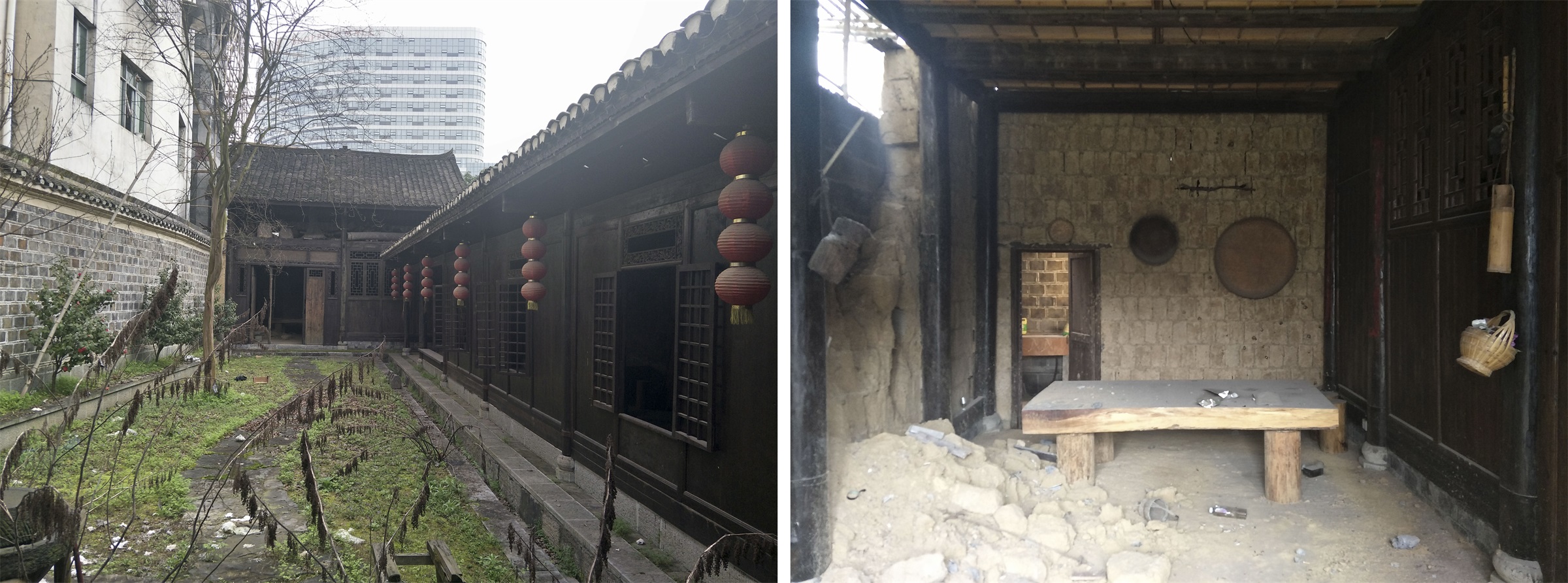
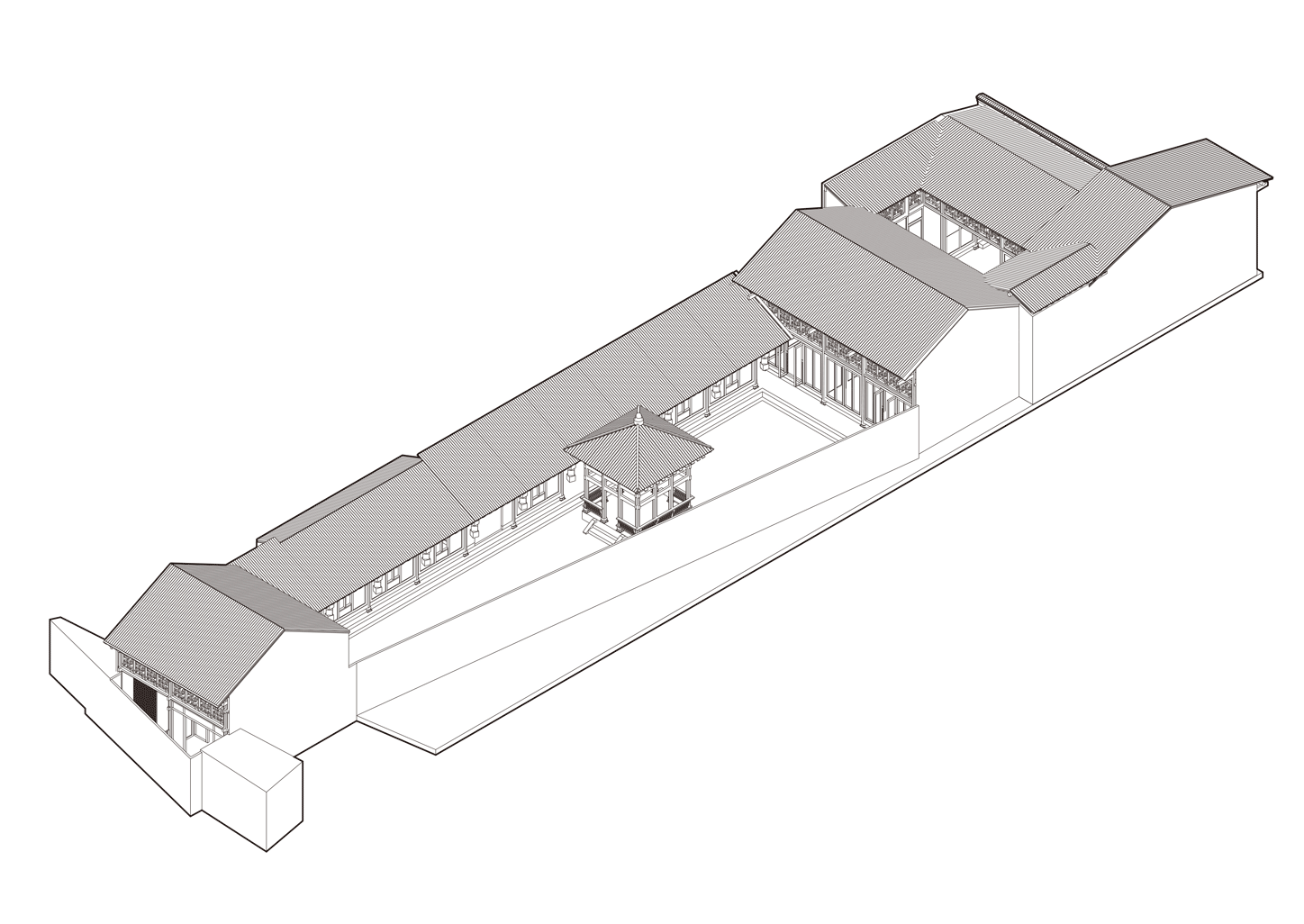
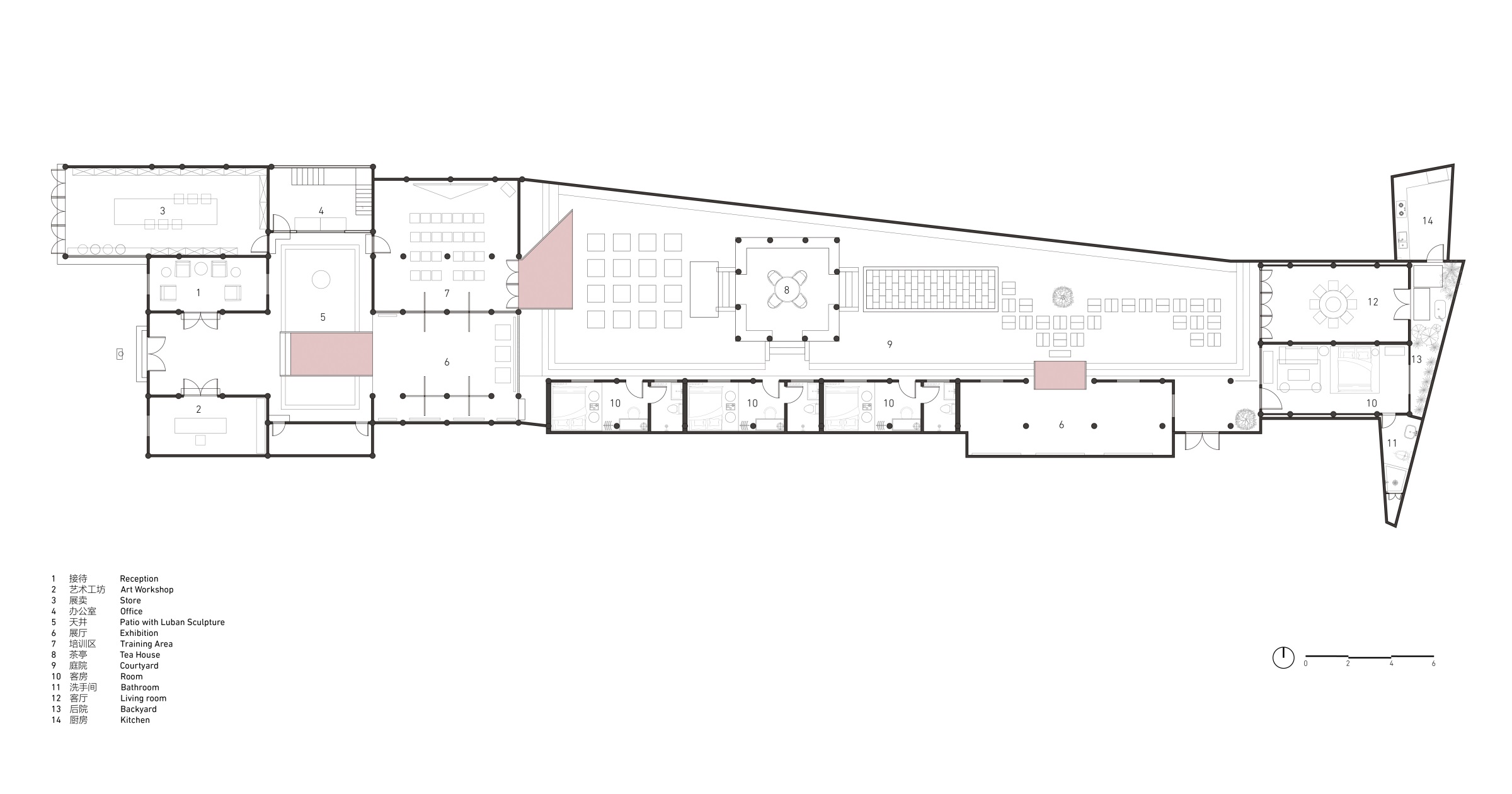
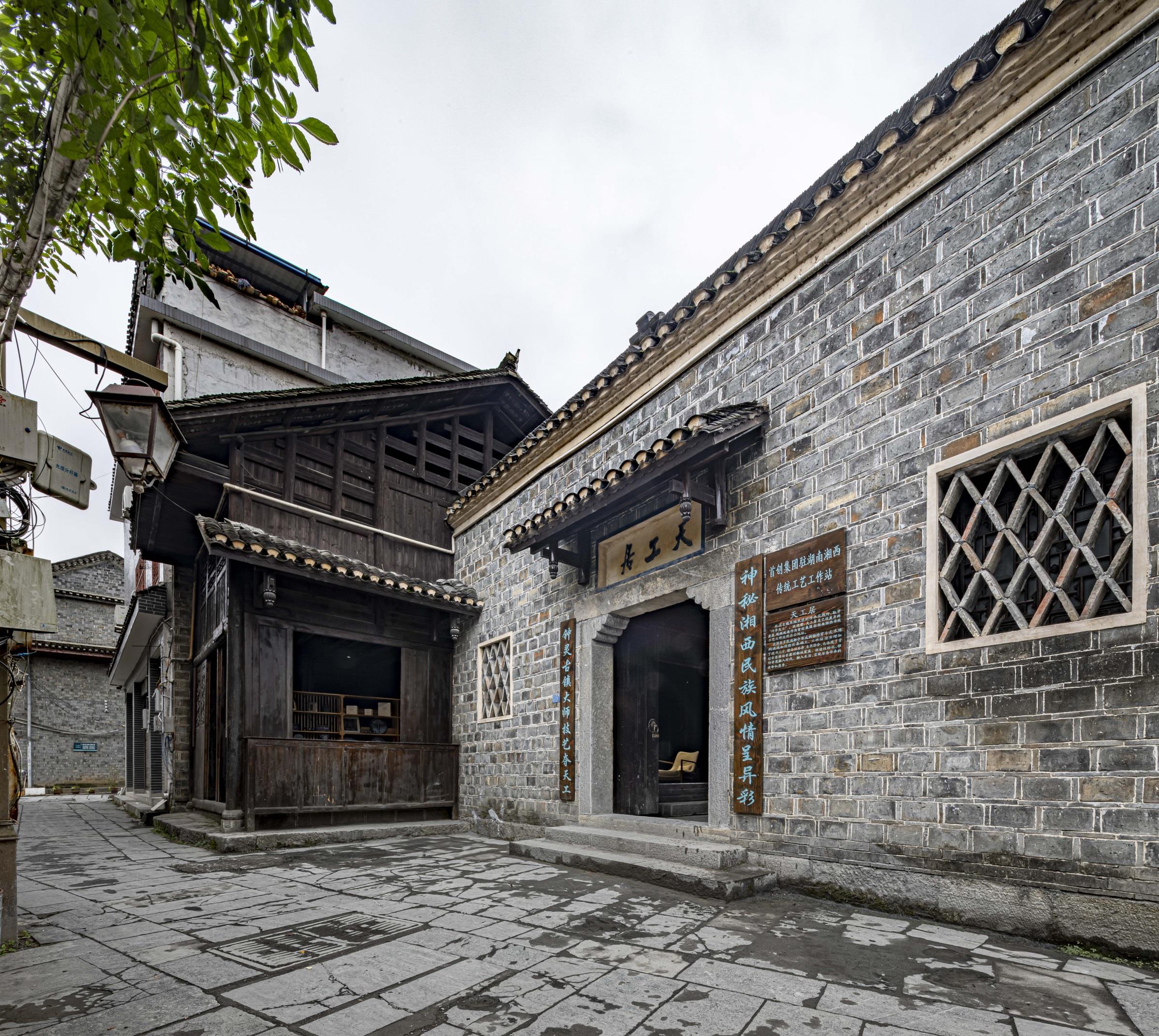

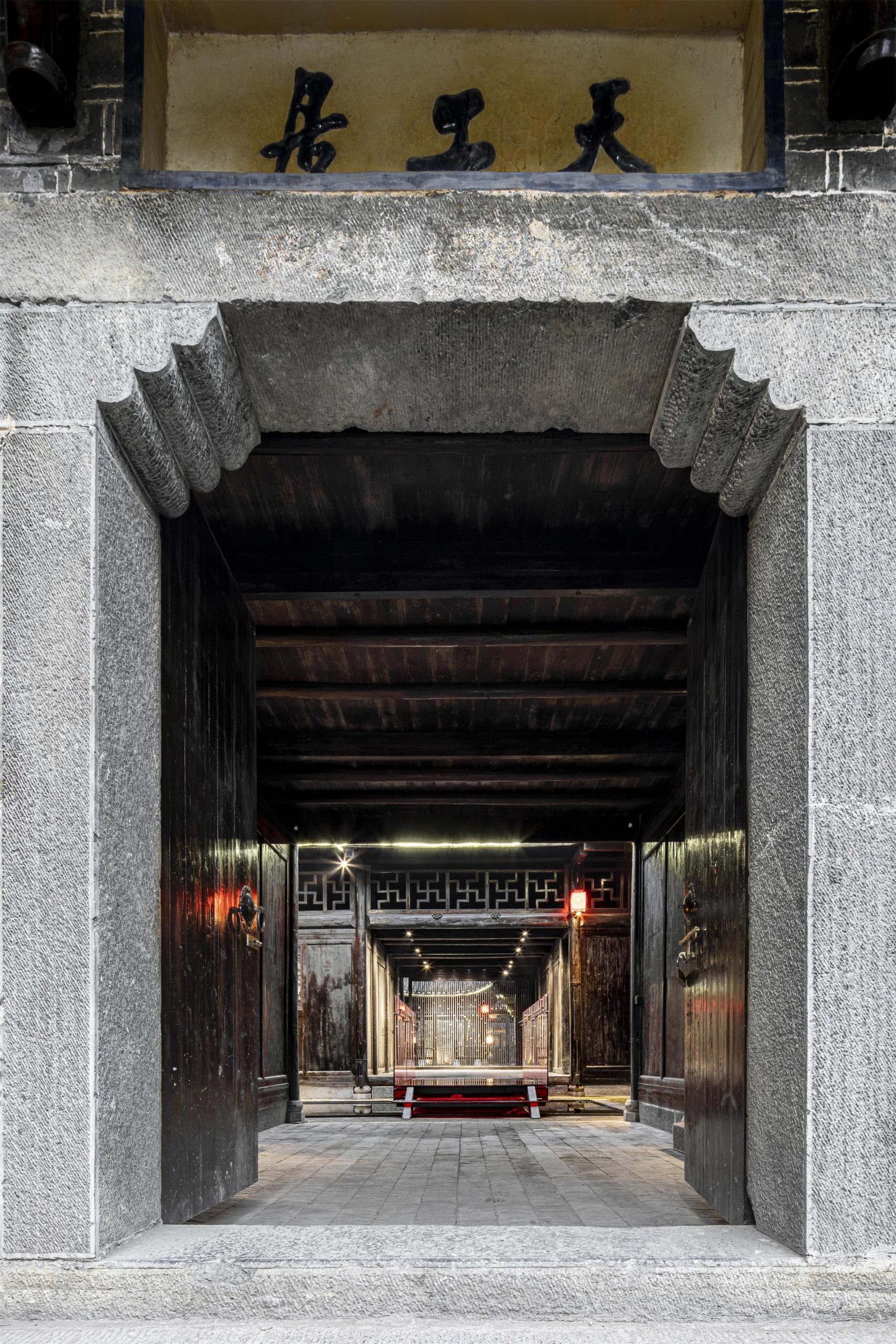
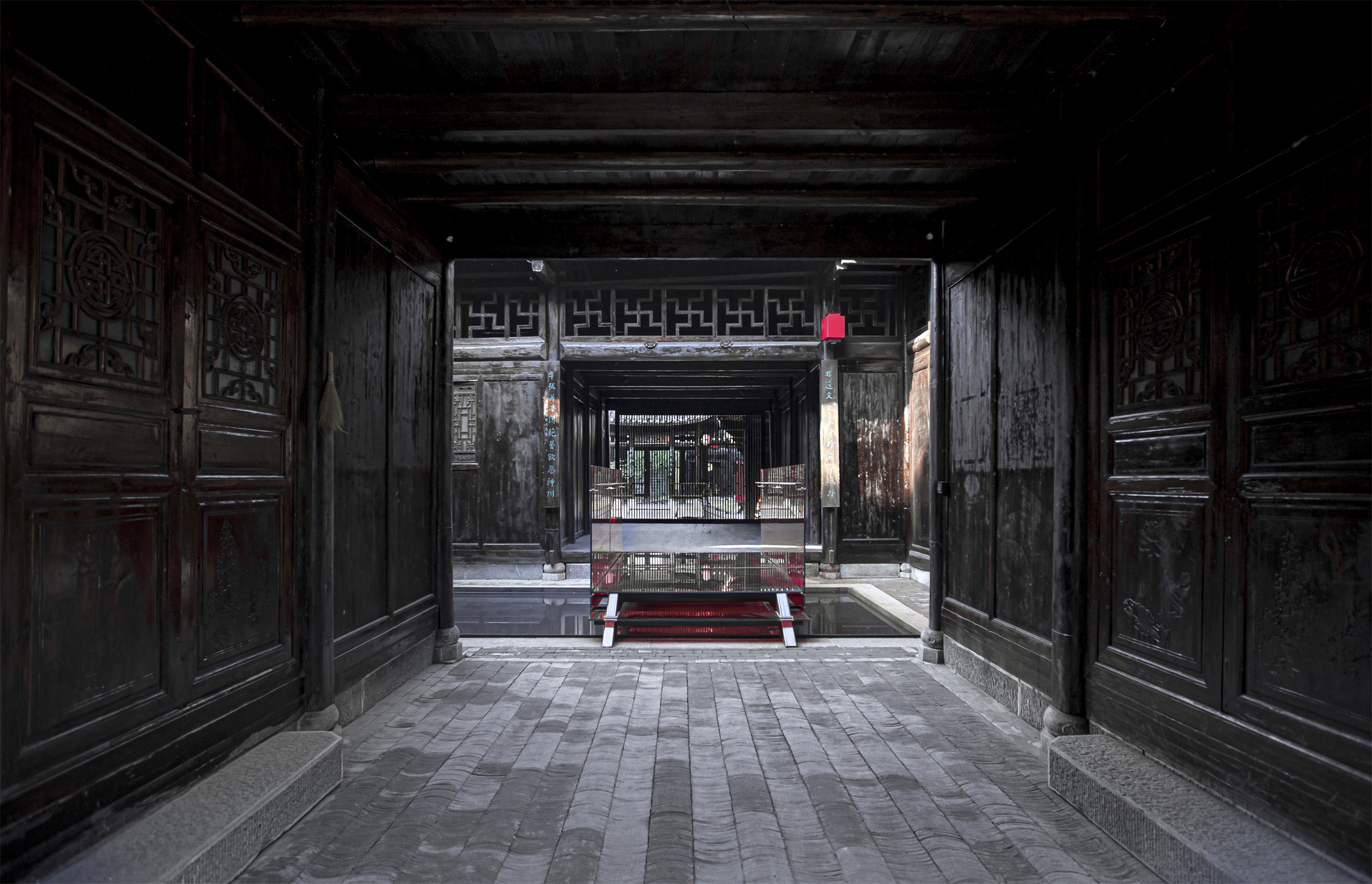













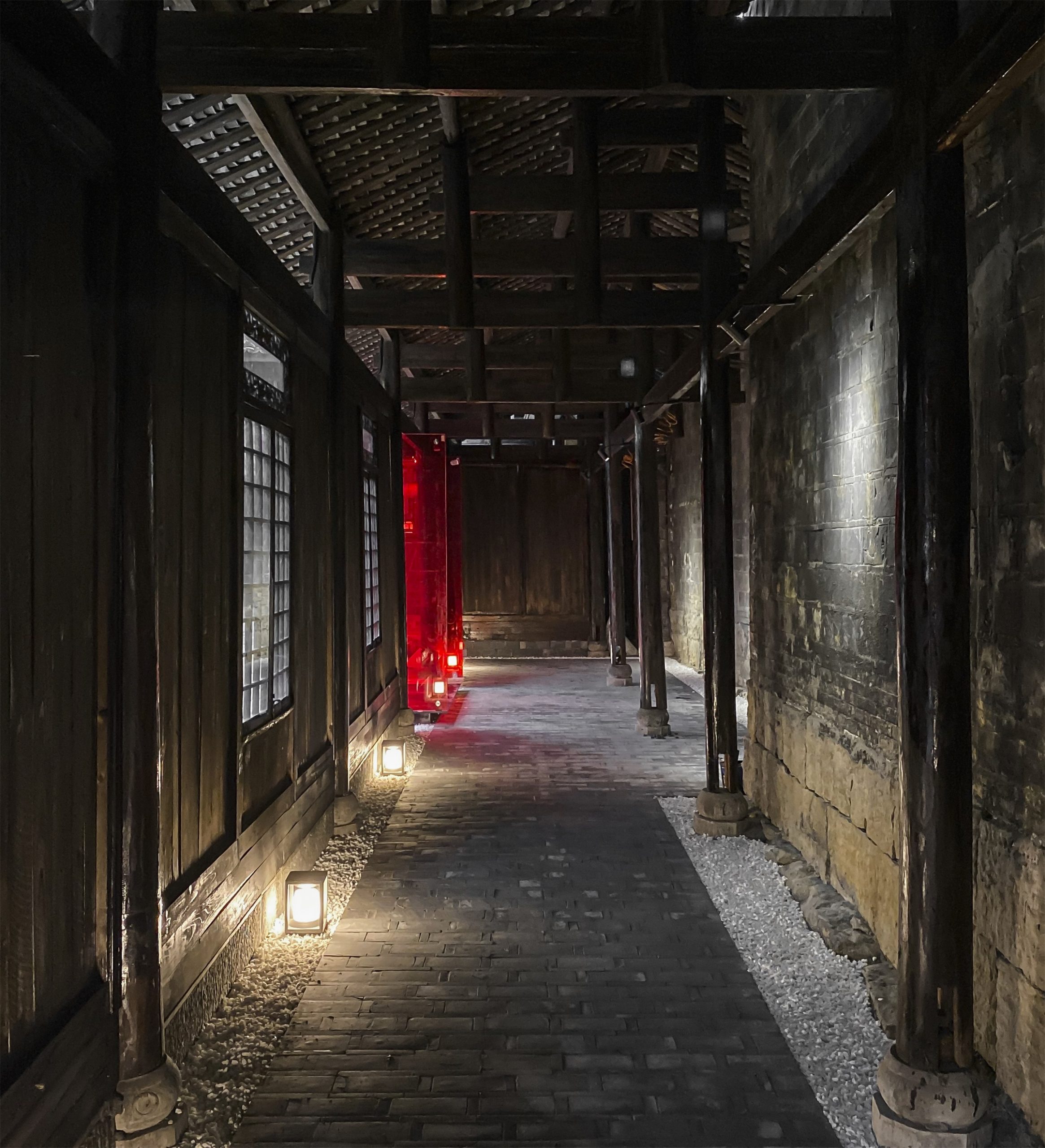

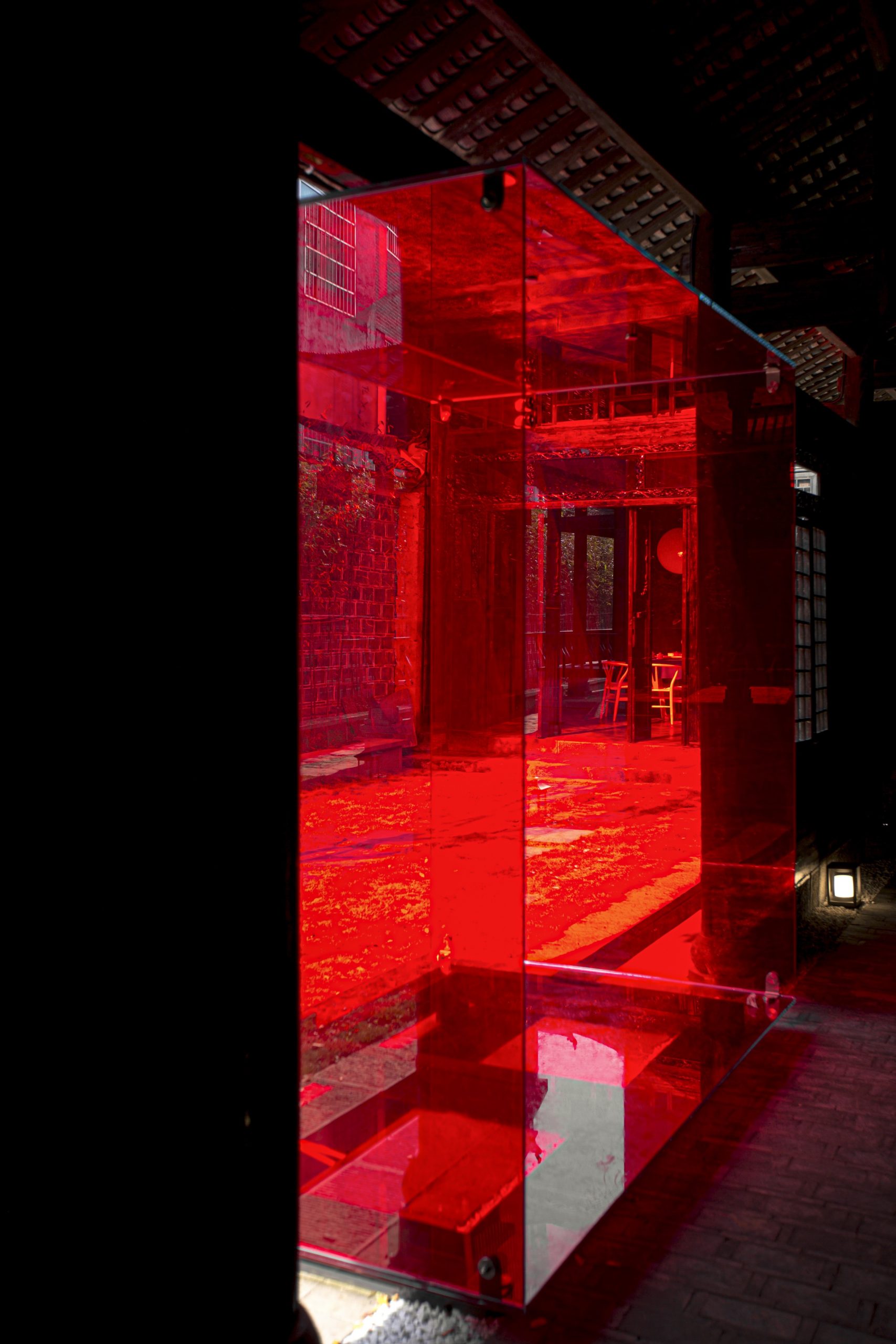






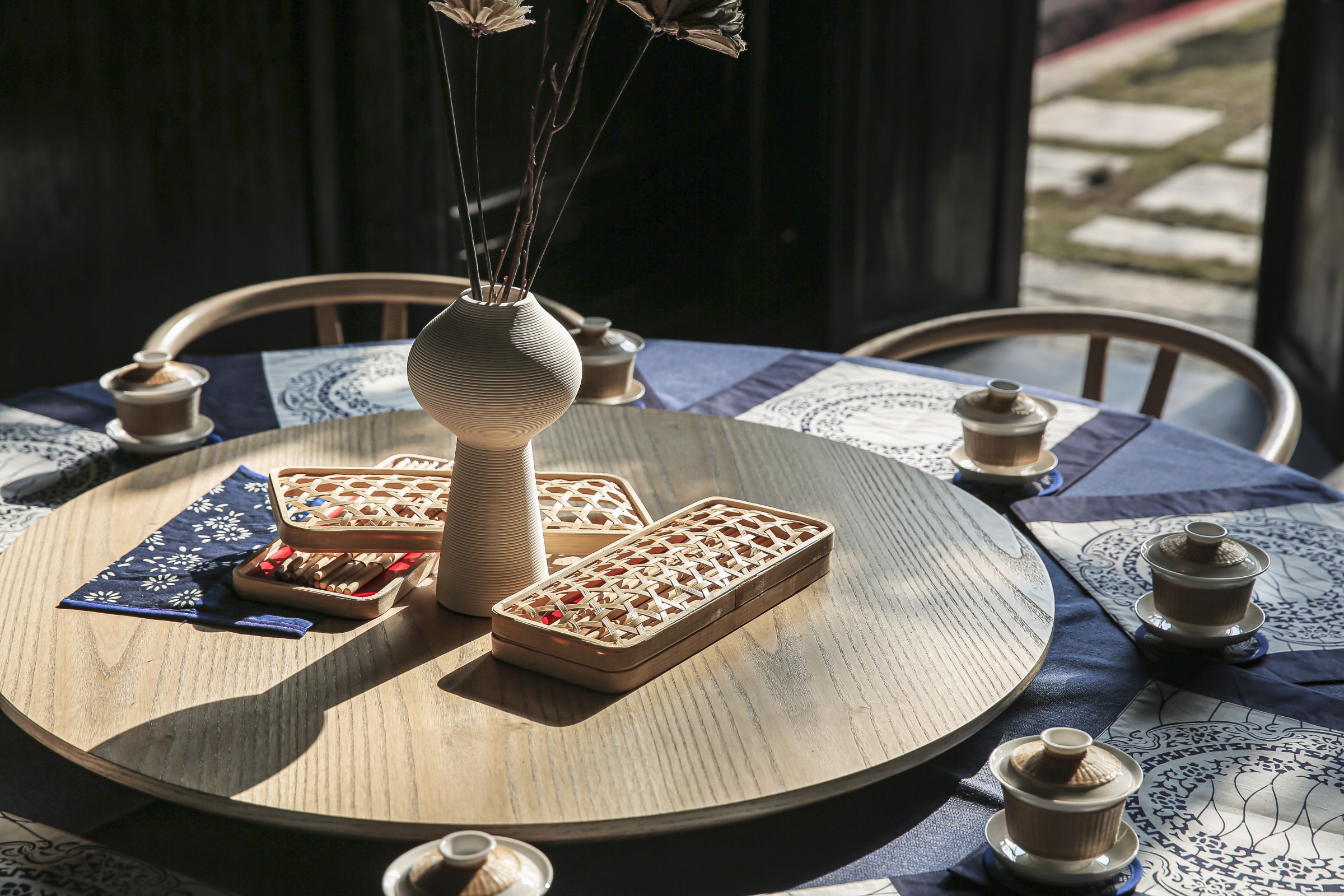



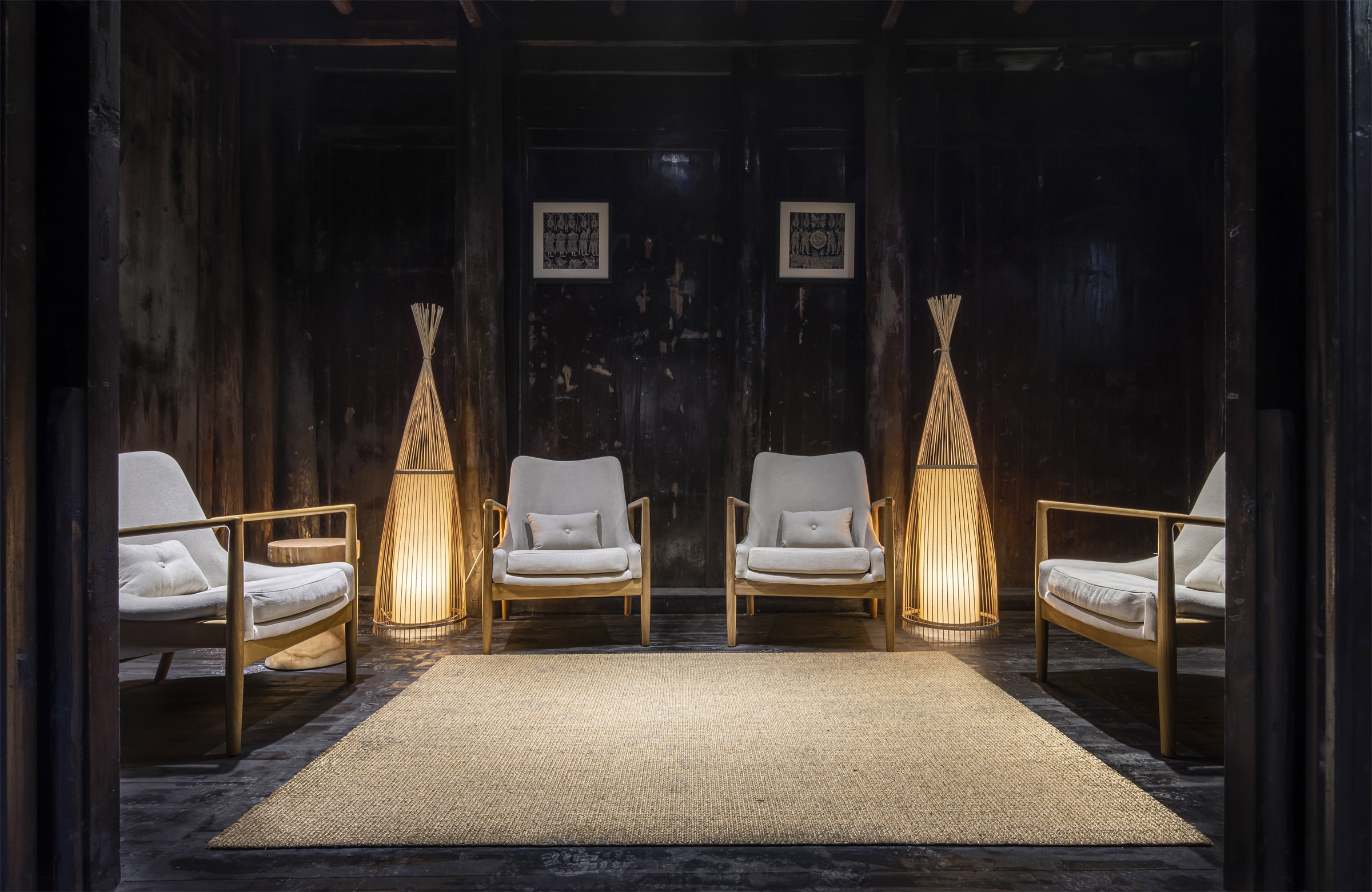

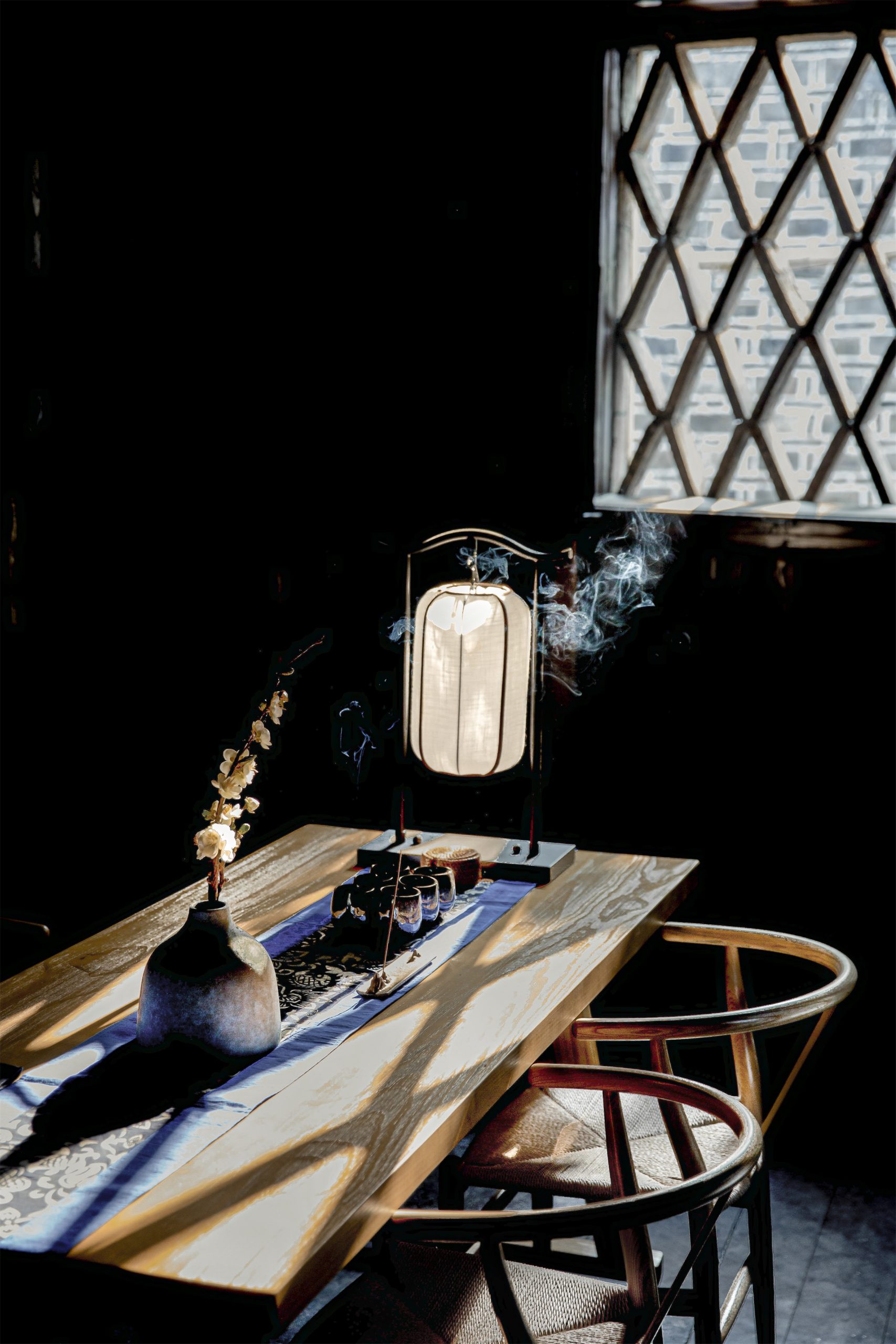


东西是好东西·就是有一种说不出的鬼魅感
加上声效,是个不错的取景地
地点还在湘西,用来做古宅探险绝对特别合适 (众所周知,湘西赶尸)
这个红玻璃认真的吗??不觉得有湘西赶尸内味儿
看着有点儿诡异啊
用透明有厚度的玻璃,质感应该比红色的更好吧,,,,这个红色有点破坏整体的质感了
用透明有厚度的玻璃,质感应该比红色的更好吧,,,,这个红色有点破坏整体的质感了